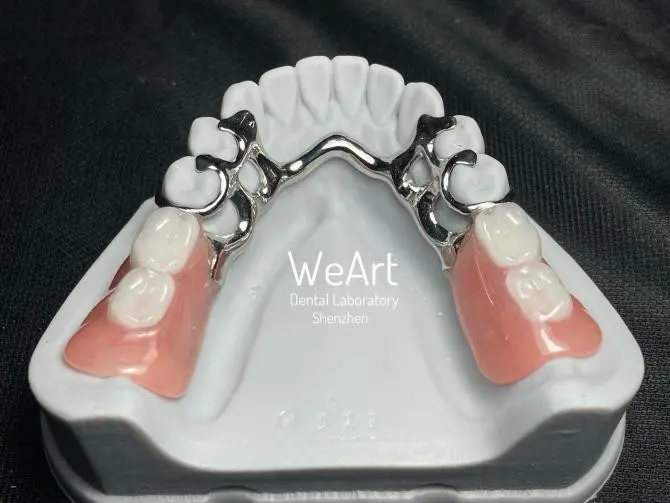What Makes Removable Restoration a Reliable Solution for Dental Patients?
2025-09-22
Dental health plays a central role in both functional well-being and personal confidence. Among the wide range of dental treatments available, removable restoration remains one of the most practical and widely chosen solutions for patients facing partial or complete tooth loss. This restorative approach combines functionality, affordability, and accessibility, ensuring that individuals of all ages can regain their smile and oral health.
So, what exactly is removable restoration? It refers to dental prosthetics that can be taken out of the mouth and reinserted by the patient, unlike fixed restorations such as crowns, bridges, or implants. The category includes removable partial dentures (RPDs) and complete dentures, both designed to replace missing teeth and restore chewing ability, facial aesthetics, and speech clarity.
The importance of removable restorations extends far beyond simple tooth replacement. They prevent neighboring teeth from drifting, protect the alignment of the jaw, and reduce stress on remaining natural teeth. They are also highly customizable, allowing dental professionals to tailor prosthetics based on each patient’s unique dental anatomy, preferences, and budget.
To illustrate the technical scope of removable restorations, here is a professional parameters overview:
| Parameter | Details |
|---|---|
| Type | Removable Partial Denture (RPD) / Complete Denture |
| Material Options | Acrylic resin, cobalt-chromium alloy, flexible nylon-based materials |
| Retention Method | Metal clasps, precision attachments, suction, or implant-supported options |
| Customization | Tooth shape, shade, gum color, bite alignment, base design |
| Average Longevity | 5 – 10 years with proper maintenance |
| Adjustability | High – can be relined, rebased, or repaired |
| Comfort Level | Moderate to high (depends on adaptation and material choice) |
| Maintenance Requirement | Daily cleaning and periodic dental adjustments |
By combining affordability, adjustability, and clinical effectiveness, removable restoration remains an indispensable option in restorative dentistry.
Why Do Patients and Dentists Choose Removable Restoration?
When evaluating restorative dental options, patients often ask why removable restorations continue to be popular when implants and fixed bridges are available. The reasons lie in a balanced mix of practicality, accessibility, and medical suitability.
1. Accessibility and Affordability
Not every patient is a candidate for implants or fixed restorations. Some may lack sufficient bone density, while others may have medical conditions that make surgical procedures less ideal. Removable restorations provide a cost-effective and non-invasive alternative, ensuring that quality care is available to a broader population.
2. Preservation of Oral Health
Unlike fixed bridges that may require alteration of adjacent teeth, removable partial dentures can often be fitted with minimal changes to natural dentition. This makes them a conservative solution, preserving existing teeth while restoring lost ones.
3. Adaptability Over Time
As the oral environment changes due to bone resorption, aging, or wear, removable restorations can be re-lined or re-based to maintain fit and comfort. This adaptability makes them suitable for long-term use without the need for repeated surgical interventions.
4. Aesthetic Customization
Modern materials allow for highly realistic appearances. Patients can choose tooth shades that match their natural teeth and gum bases that blend seamlessly with their oral tissues, ensuring a natural smile.
5. Global Dental Standard
Removable restorations are a standard part of dental care worldwide. They are backed by decades of research, clinical trials, and professional consensus, ensuring both safety and reliability.
Ultimately, removable restoration answers the “why” question with clarity: it bridges the gap between medical necessity and patient preference, offering a dependable, accessible, and adjustable path to restoring smiles.
How Do Removable Restorations Work in Practice?
The process of creating and fitting a removable restoration is a collaboration between the dentist, dental technician, and the patient. Understanding the “how” offers valuable insight into the precision and care involved.
Step 1: Initial Consultation and Examination
The dentist evaluates the patient’s oral condition, takes detailed impressions, and discusses options. Factors such as bone structure, remaining teeth, and patient lifestyle guide the choice between complete or partial dentures.
Step 2: Designing the Restoration
With input from the patient, the dental team selects materials, tooth shapes, and gum shades. Precision in design ensures comfort, stability, and aesthetic appeal.
Step 3: Fabrication
Using high-quality acrylics, metal frameworks, or flexible materials, the dental laboratory fabricates the denture according to the model. Advanced CAD/CAM technology is increasingly used to improve accuracy and fit.
Step 4: Fitting and Adjustment
The patient tries the prosthesis under professional supervision. Adjustments are made to eliminate pressure points, refine bite alignment, and improve comfort.
Step 5: Long-Term Care
Patients are educated on daily cleaning, soaking routines, and regular dental visits. Over time, relining or rebasing may be necessary to accommodate changes in the jawbone and soft tissues.
Key Advantages in Practice:
-
Restores chewing and speech ability.
-
Enhances facial aesthetics by supporting lips and cheeks.
-
Provides patients with control since they can remove and clean the prosthesis easily.
-
Reduces long-term costs compared to invasive treatments.
This systematic process ensures that removable restorations function effectively while integrating seamlessly into patients’ daily lives.
What Should Patients Know Before Choosing Removable Restoration?
Knowledge empowers patients to make confident decisions about their dental care. Before selecting removable restoration, several important factors must be considered:
-
Adaptation Period
Wearing a removable prosthesis requires an adjustment phase. Patients may experience mild discomfort, altered speech, or changes in chewing habits initially. However, with professional guidance and persistence, adaptation occurs within weeks. -
Maintenance Responsibility
Unlike fixed restorations, removable options demand daily cleaning and proper storage. Patients must commit to good hygiene practices to prevent infections and prolong prosthesis lifespan. -
Durability vs. Longevity
While highly durable, removable restorations typically last between 5–10 years, depending on care and material quality. Periodic adjustments extend usability but eventual replacement is expected. -
Lifestyle Considerations
For patients engaged in sports, public speaking, or heavy chewing habits, removable restorations may require extra stabilization options, such as implant-supported overdentures. -
Professional Support
Success depends on close collaboration with dental professionals. Routine checkups ensure comfort, prevent complications, and allow timely modifications.
Frequently Asked Questions
Q1: What is the difference between a removable partial denture and a complete denture?
A removable partial denture replaces a few missing teeth and relies on remaining natural teeth for support, often using clasps or attachments. A complete denture, on the other hand, replaces an entire arch of teeth when no natural teeth remain, using suction or implant support for retention.
Q2: How should patients care for removable restorations on a daily basis?
Patients should brush dentures with a soft-bristle brush using non-abrasive cleaners, soak them in specialized denture solutions overnight, and rinse thoroughly before reinsertion. Regular dental checkups are essential to monitor fit and oral health. Neglecting maintenance can lead to gum irritation, bad breath, or infections.
The journey of removable restoration illustrates how dentistry continues to balance accessibility, functionality, and patient satisfaction. By offering an effective solution for partial or complete tooth loss, removable restorations restore not only smiles but also confidence, speech, and quality of life.
As materials improve and digital technology refines fabrication, patients can expect even greater levels of comfort and realism in their prosthetics. The value of this restorative option lies in its adaptability, affordability, and universal acceptance, making it a reliable path for millions worldwide.
At WeArt, we understand that every smile has a unique story. Our commitment to high-quality removable restoration solutions ensures that patients receive prosthetics that combine precision, durability, and aesthetic excellence. To learn more about how our products can support dental practices and patient needs, we invite you to contact us today and discover the difference WeArt can make in restoring confident smiles.



